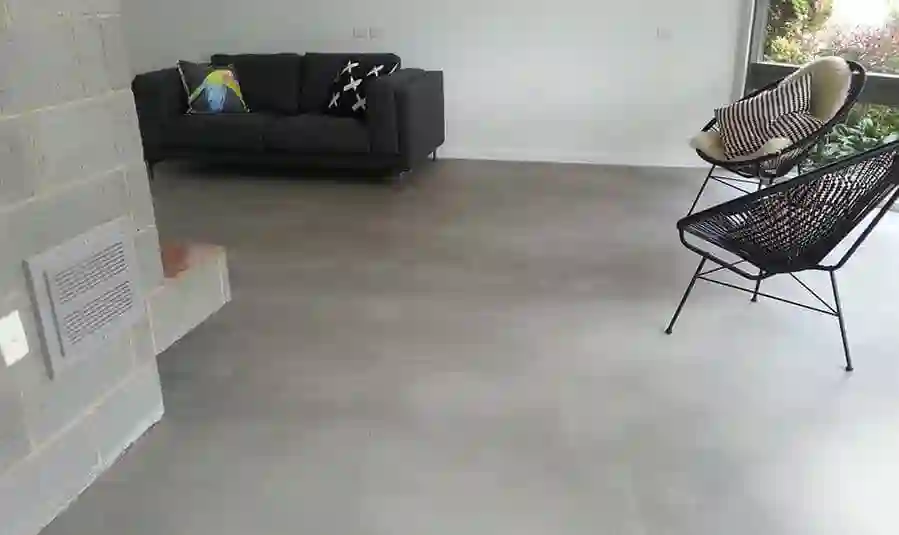Real Estate
How To Sell Your House In 2024: A Step-By-Step Guide

Selling a house can be a daunting task, especially in a dynamic real estate market like the one we face in 2024. However, armed with the right knowledge and strategies, homeowners can navigate the selling process with confidence and achieve a successful outcome. In this comprehensive step-by-step guide, we’ll walk you through the essential steps to sell your house in 2024, from preparing your property for sale to closing the deal.
Step 1: Evaluate the Market:
Before putting your house on the market, it’s crucial to assess current market conditions in your area. Research recent sales of comparable properties, known as comps, to determine the fair market value of your home. Consider factors such as local housing inventory, buyer demand, and economic trends that may impact the selling process. Consulting with a real estate agent can provide valuable insights and guidance in understanding the market dynamics.
Step 2: Prepare Your Property:
First impressions matter when selling a house, so it’s essential to make your property as appealing as possible to potential buyers. Start by decluttering and depersonalizing your space to create a clean and neutral canvas that allows buyers to envision themselves living there. Make any necessary repairs and improvements to enhance curb appeal and address any maintenance issues that could deter buyers. Consider staging your home to showcase its full potential and highlight its best features.
Step 3: Set the Right Price:
Pricing your home competitively is key to attracting buyers and securing a timely sale. Work with your real estate agent to set a realistic listing price based on market analysis and the condition of your property. Avoid overpricing, as it can deter buyers and prolong the selling process. Be prepared to negotiate with potential buyers and consider factors such as market feedback, competing listings, and the urgency of your sale when evaluating offers.
Step 4: Market Your Property:
Effective marketing is essential for reaching a broad audience of potential buyers and generating interest in your property. Utilize a multi-channel marketing strategy that leverages online platforms, social media, print advertising, and open houses to showcase your home to prospective buyers. Invest in professional photography and virtual tours to highlight your property’s unique features and create engaging marketing materials that capture buyers’ attention.
Step 5: Negotiate Offers:
Once you receive offers from interested buyers, carefully review each proposal with your real estate agent to evaluate its terms and conditions. Consider factors such as the offer price, financing contingencies, and closing timeline when determining the strength of each offer. Negotiate with buyers to reach a mutually acceptable agreement that meets your financial goals and selling objectives. Be prepared to counteroffer or accept multiple offers to maximize your selling potential.
Step 6: Close the Deal:
Once you’ve accepted an offer, work closely with your real estate agent and closing attorney to navigate the final stages of the selling process. Coordinate with the buyer’s lender, inspectors, and appraisers to ensure a smooth and timely closing. Prepare all necessary paperwork and disclosures required for the transaction, including the sales contract, title documents, and closing statements. Attend the closing meeting to sign the necessary documents and transfer ownership of the property to the buyer.
Step 7: Celebrate Your Success:
Selling your house is a significant milestone worth celebrating, so take a moment to acknowledge your accomplishment and reflect on the journey you’ve undertaken. Whether you’re moving on to a new chapter in your life or embarking on a new real estate venture, savor the satisfaction of a successful sale and the opportunities that lie ahead.
Conclusion:
Selling a house in 2024 requires careful planning, preparation, and execution to achieve a successful outcome in today’s competitive real estate market. By following this step-by-step guide and working closely with a knowledgeable real estate professional, homeowners can navigate the selling process with confidence and maximize their selling potential. Remember, selling a house is not just a transaction—it’s a journey that represents a new beginning and a fresh start.

Real Estate
The Importance of Concrete Floor Sealing in Sydney: A Builder’s Perspective

Concrete is one of the most common and durable materials used in construction. As a builder in Sydney, I’ve seen firsthand how the decision to seal concrete floors can make all the difference in the longevity, appearance, and performance of both residential and commercial spaces.
Concrete Floor Sealing
Concrete floor sealing involves applying a protective coating to a finished concrete surface. This process is essential for preserving the natural strength and durability of concrete. Sealing provides a barrier against moisture, chemicals, abrasion, and other damaging elements. It is not merely an aesthetic upgrade, but an integral part of maintaining and extending the life of a concrete floor.
In Sydney, where weather patterns can vary significantly throughout the year, concrete is exposed to both intense UV radiation during the summer and cold, damp conditions in the winter. These extremes can cause the concrete to expand, contract, and develop cracks over time. A quality sealer not only guards against these issues but also enhances the floor’s overall appearance by highlighting its natural texture and colour.
Benefits of Sealing Concrete Floors
- Enhanced Durability and Longevity: One of the foremost reasons to seal concrete floors is to improve their durability. Sealing acts as a protective layer that reduces the impact of heavy foot traffic, equipment, and other wear and tear. For commercial spaces in Sydney, where the floors are constantly in use, this extra protection can significantly extend the life of the concrete surface.
- Moisture Protection: Sydney’s climate can be quite humid, particularly in the coastal regions. Moisture penetration is a serious issue that can lead to the development of mould, mildew, and even structural damage over time. A sealed floor is less likely to absorb water, reducing the risk of these problems and helping to maintain a healthier indoor environment.
- Stain and Chemical Resistance: In both residential and industrial settings, spills are inevitable. From everyday household spills to industrial chemicals in commercial kitchens or factories, these substances can stain or damage an unsealed concrete floor. Sealing the surface provides a barrier that repels spills and makes cleaning much easier, keeping your floors looking pristine.
- Aesthetic Appeal: A well-sealed concrete floor has a polished and sophisticated look that can elevate the aesthetic of any space. Whether you’re designing a modern home, a trendy café, or a high-traffic commercial area, a sealed concrete floor offers a versatile canvas that complements a range of interior design styles.
- Cost-Effective Maintenance: While the initial cost of sealing may seem like an additional expense, it is a worthwhile investment. A sealed floor requires less frequent maintenance and repair, which can lead to significant cost savings over the life of the property. Regular sealing helps to avoid the expensive repairs that might be needed if the floor were to deteriorate prematurely.
Specific Considerations for Sydney’s Environment
Sydney’s diverse climate and urban environment present unique challenges that make floor sealing particularly beneficial. The city experiences high UV levels during the summer months, which can cause the concrete to fade and lose its strength over time. Additionally, urban pollution and the occasional salt spray near coastal areas can contribute to the degradation of unsealed concrete.
Builders in Sydney must also contend with the occasional heavy rainfall and humidity spikes, which can seep into unprotected concrete, leading to efflorescence (a white, powdery residue) and cracking. Sealing concrete floors in Sydney is a proactive step to combat these issues, ensuring that your floors remain in top condition regardless of the weather.
The Sealing Process: What to Expect
The process of sealing concrete floors is both an art and a science. Here’s a breakdown of what a typical sealing project might involve:
- Surface Preparation: Before any sealer is applied, the concrete surface must be thoroughly cleaned and prepped. This might involve sweeping, vacuuming, or even pressure washing to remove all dust, dirt, and debris. In some cases, minor repairs may be needed to fill in cracks or level the surface.
- Choosing the Right Sealer: There are various types of sealers available, ranging from penetrating sealers to high-gloss epoxies. The choice depends on the intended use of the floor, the level of traffic it will experience, and the desired finish. As a builder, I often recommend sealers that provide both durability and a natural look, which suit the diverse needs of Sydney properties.
- Application: The sealer is typically applied using rollers, brushes, or even sprayers. It’s crucial that the application is even and consistent to ensure full coverage. In some cases, multiple coats are required. Each coat must be allowed to cure properly before the next one is applied, which ensures that the final finish is smooth and resilient.
- Curing and Maintenance: Once the sealer is applied, the floor needs adequate time to cure. This period varies depending on the product used and environmental conditions, but it generally takes at least 24 hours. After curing, regular maintenance, including periodic cleaning and reapplication of the sealer, can help maintain the floor’s protective barrier.
The Economic and Practical Benefits
From a builder’s perspective, sealing concrete floors is not just about aesthetics—it’s a sound financial decision. Here are some key economic and practical benefits:
- Reduced Repair Costs: Sealed floors are less likely to suffer from damage that requires costly repairs. This means lower maintenance costs over time, which is an attractive selling point for property owners.
- Improved Property Value: A well-maintained, sealed concrete floor enhances the overall appearance and value of a property. Potential buyers are more likely to invest in a property that promises lower maintenance costs and enduring quality.
- Safety and Hygiene: In commercial and public spaces, sealed floors are easier to clean and disinfect, contributing to a safer and more hygienic environment. This is particularly important in settings such as hospitals, restaurants, and educational institutions.
- Environmental Considerations: Many modern sealers are designed with environmental sustainability in mind. They can reduce the need for frequent chemical clean-ups and repairs, which is beneficial for the local ecosystem. This is a factor that increasingly matters to both builders and property owners in Sydney.
Challenges and Best Practices
Despite its many benefits, concrete floor sealing is not without its challenges. In Sydney, the fluctuating weather conditions and varying levels of humidity can sometimes interfere with the curing process. Here are some best practices to ensure a successful sealing project:
- Weather Awareness: Always check the weather forecast before beginning a sealing project. Avoid applying sealers during periods of high humidity or when rain is expected. If the conditions aren’t ideal, it might be better to postpone the project to ensure optimal results.
- Quality Products: Invest in high-quality sealers that are specifically formulated for the local climate. Cheaper products may save money upfront, but often fail to provide the long-term protection needed in Sydney’s harsh conditions.
- Professional Application: While DIY projects are popular, the complexity of sealing concrete floors means that professional expertise is typically warranted. Experienced professionals understand the nuances of surface preparation, product selection, and application techniques that can make all the difference in the final outcome.
- Regular Maintenance: Even the best-sealed floors require regular upkeep. Establishing a maintenance schedule that includes periodic cleaning and reapplication of the sealer will help preserve the floor’s integrity over the years.
Real-World Examples in Sydney
Over the years, I’ve worked on numerous projects across Sydney that underscore the value of concrete floor sealing. In one instance, a commercial warehouse that had been suffering from repeated moisture damage underwent a complete resealing. The project not only halted further degradation but also improved the appearance of the space, making it more appealing to tenants and customers alike.
In another case, a residential property in a busy inner-city neighbourhood benefited enormously from sealing. The homeowners reported fewer issues with stains and easier cleaning, and the sealed floors added a modern, sleek look to their home. These examples demonstrate that whether you’re working on a commercial or residential project, the benefits of concrete floor sealing are tangible and significant.
Conclusion
Concrete floor sealing is much more than a cosmetic treatment—it is an essential step in preserving the integrity, safety, and longevity of concrete surfaces. In Sydney’s varied climate, where the challenges of moisture, UV exposure, and heavy foot traffic are a daily reality, sealing is a practical and economically sound investment. As a builder, I strongly advocate for incorporating high-quality sealing solutions into every project, ensuring that the floors we install today will remain resilient and attractive for years to come.
From enhancing durability and protecting against moisture to improving the overall aesthetics of a space, the benefits of concrete floor sealing are clear. Whether you’re a homeowner looking to preserve your property or a business aiming to reduce maintenance costs, sealing your concrete floors is a decision that pays dividends in the long run.
By embracing the latest sealing technologies and best practices, we in the construction industry can continue to deliver spaces that not only meet the functional demands of modern living but also exceed expectations in durability and style. In Sydney, where every detail matters and quality is paramount, concrete floor sealing stands out as a vital component in the quest for excellence in construction and design.
In summary, investing in the sealing of concrete floors is one of the smartest moves you can make to ensure that your property withstands the test of time. It’s a practice that not only protects your investment but also contributes to a safer, more attractive, and more sustainable built environment. As we move forward, it’s clear that this simple yet effective solution will remain at the forefront of construction best practices in Sydney and beyond.
By carefully selecting quality sealers, following proper application methods, and keeping up with regular maintenance, you can enjoy the full benefits of a sealed concrete floor—a durable foundation that supports a vibrant, thriving space for years to come.
Real Estate
How Local Law 126 Impacts Property Owners in NYC: A Detailed Overview

The nuances of Local Law 126
Local Law 126 was created as an amendment to NYC’s building safety regulations. It focuses primarily on periodic inspection and upkeep of parapets and other exterior building elements. The primary requirements are:- Mandatory inspections of parapets, façades, and major structural elements.
- Filing a detailed inspection report with the NYC Department of Buildings.
- Adhering to the compliance deadlines.
Who is covered by Local Law 126?
Local Law 126 covers the following:- Residential or commercial
- Six stories or taller
- Located in 5 boroughs- Staten Island, the Bronx, Brooklyn, Queens and Manhattan
The inspection process simplified
The inspection process is described below:- You must hire a licensed entity for yearly parapet inspection to comply with Local Law 126.
- The entity will send its team to your property and check the parapet and exterior facades for cracks, structural damage, loose bricks, and bulging parapets. They will also look for signs of water damage and erosion.
- After the inspection, the team will categorize the building as safe, unsafe, or safe with repairs and maintenance. The report must be filed with the DOB within the stipulated deadline.
- For SWARMP or unsafe category properties, property owners need to carry out recommended repairs.
What are the results of non-compliance?
If you fail to adhere to Local Law 126, the results can be severe.- Monetary penalties-You may have to pay penalties per month for non-compliance. The exact amount is required for buildings with penalties for unsafe conditions.
- Lawsuits-The owner may face lawsuits if a pedestrian is injured for an unsafe property.
- Repair cost-Delaying property inspections can lead to escalated repair costs.
Summing it up
You have to understand that Local Law 126 in Bronx, Manhattan, Queens, Brooklyn, and Staten Island, NY is far from a regulatory burden. It will help you keep the property safe and ensure the safety of the pedestrians, too. Periodic inspections help you identify parapet or external façade issues and repair them in time. This, in a way, helps improve the value of the property. Just ensure you choose a credible entity like nycparapetsinspection.com for the yearly inspection.Read More latest Posts
Real Estate
Legal Insights for Shared Ownership in an Inherited Family Property

Unlock the secrets to successful shared ownership in an inherited family property with our comprehensive legal insights. Are you facing the unique challenge of navigating joint ownership of a cherished family home, cottage, or land? This can be an emotionally charged and complex situation, often fraught with potential conflicts and legal complications.
That’s why we’ve compiled a must-read guide to help you make informed decisions and safeguard your family’s legacy. Read on.
Understanding Shared Ownership
Shared ownership refers to the scenario in which multiple individuals jointly own a property. In the case of an inherited family property, siblings, children, or other relatives may all inherit a stake in the home. It’s important to understand that, unless the deceased’s will specifies otherwise.
All inheritors will typically own equal shares of the property unless agreed upon otherwise. The key legal issue in shared ownership is ensuring clear communication and agreements about how the property will be:
- used
- maintained
- if necessary, sold
The Role of the Will
When an inherited property is involved, the will of the deceased plays a critical role in determining who inherits the property and how ownership is divided. If the will clearly designates specific shares to each beneficiary, the terms are legally binding.
However, if the property is left to multiple individuals without clear instructions, the inheritance may be subject to discussions or even disputes among the heirs. It’s also important to note that, in the absence of a will (intestate succession), the property will be divided according to state laws.
Legal Structure of Shared Ownership
Once the property has been inherited, it is important for the co-owners to establish a clear legal structure for the shared ownership. There are two primary ways this can be organized:
Joint Tenancy
If the owners are listed as joint tenants, the principle of “right of survivorship” applies. This means that if one owner passes away, their share automatically passes to the remaining owners. This structure can be beneficial for keeping property in the family, but it also requires the owners to be in agreement about all decisions.
Tenancy in Common
In this case, each co-owner holds a distinct share of the property. These shares can be equal or unequal, and the right of survivorship does not apply. This means that if one owner dies, their share will pass according to their will or estate plan.
Tenancy in common is often more appropriate when different family members contribute to the property in varying ways or have different long-term goals for the property. Just remember to consult a lawyer to learn more about tenants in common and joint tenants.
Dispute Resolution and Agreements
Disagreements between co-owners are not uncommon, especially when the inherited property has emotional significance. If conflicts arise regarding the sale, use, or management of the property, the situation can escalate quickly. Having a written agreement in place can help prevent misunderstandings and minimize the potential for legal disputes.
Selling or Renting the Property
If the co-owners decide to sell the inherited property, they will need unanimous consent from all parties unless specified otherwise in the ownership agreement. If there is a disagreement, one party may seek legal action to force the sale, but this process can be costly and time-consuming.
Protect Your Family Property Now
Shared ownership of an inherited family property can be a rewarding experience, but it also requires careful legal and financial planning to avoid conflict. If you’re navigating the complexities of shared ownership, consulting with a legal professional can help.
If you want to read more articles, visit our blog.
Read More latest Posts
- The Importance of Concrete Floor Sealing in Sydney: A Builder’s Perspective
- Anime Last Stand Codes – Updated List for Free Rewards
- FlixPress Intro Maker – Create Free Intros Online Fast
- Cece Sesame Street – Who is This Fun Character?
- Flixpress Intro Maker – Create Free Intros Online Easily
-

 Travel1 year ago
Travel1 year agoOnboardicafe.com Login Exploring the Delights of Onboardicafe
-

 Food & Recipes12 months ago
Food & Recipes12 months agoFive Food Products You Must Avoid Giving to Your Infant
-

 Sports1 year ago
Sports1 year agoThe Most Popular Sports In The World
-

 Health & Fitness10 months ago
Health & Fitness10 months agoSuboxone Tooth Decay Lawsuits and the Pursuit of Justice Against Indivior
-

 Sports9 months ago
Sports9 months agoSmart Solutions for Football Field Maintenance
-

 Entertainment1 year ago
Entertainment1 year agoNavigating the Web: The Ultimate List of Tamilrockers Proxy Alternatives
-

 Technology4 months ago
Technology4 months agoSustainable Practices in Video Production: Reducing the Carbon Footprint
-

 Sports9 months ago
Sports9 months agoWearable Tech and the Future of Football









